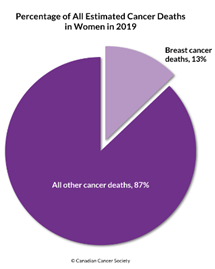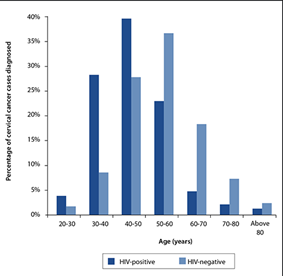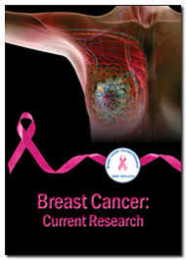Theme: New Discoveries for Better Diagnosis and Treatments for Breast Cancer
BreCeCan 2020
Dear Potential Researchers, Scientists, Industrialists & Students,
Join us for 2nd World Conference on Breast and Cervical Cancer
Update your skills, Meet your academic heroes, Engage in high-level debates and refine your ideas enhance your knowledge base, and broaden your horizons, Visit a new place and have fun, - all in one place!
Date: November 23-24, 2020
If you are interested to be a part of this event as a speaker or delegate!
Email at: brececan@memeetings.net
WhatsApp at: +44 7723584386
ME Conferences organizes a series of conferences of 1000+ international Events inclusive of 1000+ Conferences, 500+ future and former Symposiums and Workshops in USA, Europe & Asia with support from a thousand additional scientific societies and publishes 700+ Open access Journals that contains over 50000 eminent personalities, acknowledged scientists as editorial board members
This innovative conference will discuss the directions of Breast Cancer and Cervical cancer with advanced Cancer medicine in this fast moving and developing science and technology . World Conference on Breast and Cervical Cancer provides the scope for opportunities to learn about latest technologies, medical practices and mainly focuses on spreading the awareness about how to prevent Breast and Cervical cancers and various challenges in the field of Oncology and Cancer.
We are awaiting a great gathering of scientists, research scholars, surgeons, physicians, scientific faculty, pharmaceutical industries and manufacturers and more audience worldwide.
Why to attend Breast and Cervical Cancer Conference?
BRECECAN 2020 provides the best platform to learn, inform and discuss new ideas, current discoveries, medications, failures and issues related to Breast and Cervical Cancer as well as women healthcare and is progressed by knowledgeable, skilled and experienced oncologists, cancer scientists, cancer health professionals, cancer nurses and hospitals, breast cancer speacialists, oncology researchers, women health care associates, pharmaceutical companies and a team of many other multidisciplinary specialists and medical device manufacturing company.
BreCeCan 2020 Conference aims in gathering worldwide experts and eminent people to share and discuss their novel ideas and research work so that it would be beneficial for women suffering from breast and cervical cancers. BreCeCan 2020 objective is to gather audience from everywhere throughout the world to present current research and to disseminate the new trends in the field of Breast and Cervical cancer.
It will be a great platform for the young budding researchers and delegates to breakout sessions, highlighting clinical projects, education, and research studies and also to gain immense knowledge from the Conference with the Oncologists, Breast Cancer Surgeons, Oncology Specialists and Cervical Cancer Physicians.
We likewise respect the cooperation of scientists, research scholars, surgeons, physicians, scientific faculty and more audience, Presidents, CEO's, Delegates and Industrial administrators from Pharmacy and Health care divisions making the meeting an ideal stage to arrange, share perspectives and information through interactive keynote, plenary, posters and B2B discussions.
Target Audiences of Breast and Cervical Cancer Conference
- Academic Professionals
- Research Scholars
- Pharmaceutical Companies
- Nurses
- Associations and Societies
- Oncology and Faculty
- Medical Colleges
- Cancer Physicians
- Training Institutes
- Manufacturing Medical Devices Companies
- Hospital Administrators
- Hospital General Counsel
- Women Nutritionists and Dieticians
- Oncology Hepatologist
- Pharmaceutical Industrialists
- Biopharmaceutical Industries
- Cancer
- Physicians
- Medical professionals
- Nurses
- Gynaecologists
- Dermatologists
- Surgical Oncologists
- General Oncologists
- Epidemiologists
- Oncologists
- Hematologists
- Pediatricians
- Hepatologists
- Surgical Oncologists
- Cancer scientists
Track 1: Breast Cancer Biology
Breast cancer starts when cells in the breast begin to grow out of control. These cells usually form a tumor that can often be seen on an x-ray or felt a lump. The tumor is malignant (cancer) if the cells can grow into (invade) surrounding tissues or spread (metastasize) to distant areas of the body. Breast Cancer occurs almost entirely in women, but men can get breast cancer, too. This starts from different parts of the breast. Most breast cancers begin in the duck carry milk to the nipple. Many of the breast cancer forms lumps, but not all do. Most of the lumps are begin and not cancer (malignant). Non-cancerous breast tumors are abnormal growths, but they do not spread outside of the breast and they are not life-threatening. Investigating the difficulties concerning brilliance in Breast Cancer Conferences, Oncology Meetings research and experimentation which incorporates provoke keynote introductions, Oral talks, Poster introductions, and Exhibitions.
Track 2: Cervical Cancer Biology
The Cervix is the lower some portion of the uterus which opens into the vagina. At the point when the strange cells of the cervix become crazy, cervical disease happens. Cervical growth can be effectively recognized in the beginning periods by a test called 'Pap test'. Most sorts of cervical disease are caused by an infection known as Human Papillomavirus or HPV. There are many kinds of HPV. However, every kind does not bring about cervical tumor. A few causes genital warts which do not have any side effects. The primary drivers of cervical growth are smoking, use of oral preventative pills and getting various pregnancies. The side effects of cervical malignancy incorporate unpredictable seeping from the vagina other than the conclusive time traverse of general menstrual cycle, torment in the lower stomach area, torment amid sexual relations and irregular vaginal release. Each sort of cervical malignancy isn't lethal to the ladies. Treatment that incorporates surgeries and chemotherapies has been turned out to be fruitful in treating cervical malignancy in the underlying stages.
Track 3: Cancer Therapy, Prevention and Medicine
To reduce the chance of developing breast cancer for women at higher risk, healthcare providers may recommend therapy along with one of several medications based upon a careful risk assessment. Selective estrogen receptor modulators (SERM) is another name for these medications, these includes tamoxifen and raloxifene. Aromatase inhibitors are another group of medications, they are effective for the breast cancer prevention. These medications prevent tumor which are known to be responsive to female hormones. Treatment plan to achieve good outcome is affected by the biology of breast cancer. Breast Therapy includes Mastectomy, Breast-sparing surgery, Radiation therapy, Chemotherapy, Stereotactic Radiosurgery, Hormone Therapy and Targeted Therapy.
Track 4: Screening, Detecting and Diagnosing
Before breast cancer causes any warning signs or symptoms screening tests are used to detect the breast cancer. With the help of screening tests breast cancer can be detected early which increase the chances of survival. Clinical breast exam and mammography are breast cancer screening tests. At higher risk of breast cancer breast MRI can also be used for some women. Powerful magnetic field and radio waves are used during Magnetic resonance imaging (MRI), which produces detailed images of structures within the breast. If breast cancer gets detected either by screening tests or from symptoms diagnostic tests are given to the woman who is suspected of having breast cancer. Diagnostic tests includes Mammogram ( X-ray of breast), Breast ultrasound (uses sound waves to produce pictures of structures), Removing a sample of breast cells for testing (biopsy), Breast magnetic resonance imaging (MRI).These diagnostic tests confirm the presence or absence of breast cancer and give more information about breast cancer like whether it has travelled outside the breast or not. Many tests are used to monitor how well therapies are working after the diagnosis of breast cancer. These tests after diagnosis are also used to check any signs of recurrence. These tests include mammography and medical history, physical examination. Patient should visit the doctor after every 3 to 6 months for the 3 years after the treatment.
Track 5: Surgery Choices for Breast Cancer
Common treatment for breast cancer is Surgery, removal of as much of the cancer as possible is the main purpose of the surgery. Different types of surgeries are available. Some type of surgery is a part treatment for most women with breast cancer. Two main type of surgery to remove breast cancer-Breast-conserving surgery and Mastectomy. During the breast-conserving surgery most of the breast part containing cancer is removed as well as some part of surrounding tissues is also removed. Mastectomy includes the removal of entire breast, double mastectomy is also done in some cases I which both the breasts are removed. At early stages of breast cancer many women can choose between breast-conserving surgery and mastectomy. Women going for BCS have advantage of keeping most of her breast but she will also need radiation. Women going for mastectomy at earlier stages are less likely to need radiation. Because of the type of breast cancer mastectomy may be the better option for some women.
Track 6: Immunology and Breast Cancer
Immune response get trigger due to the every cancer, this is the first line of defense against the progression of any cancer. Relationship is there in between the immune system and tumor evolution in case of breast cancer as well. Variety of immune cells is there in the environment of tumor that can help in arresting the progression of breast cancer. Therapies used for the treatment of breast cancer can modulate these immune cells in case of breast cancer. B lymphocytes secrete antigen-specific immunoglobulin which might be having a anticancer properties. The patient that is suffering from breast cancer have increase population of B lymphocytes in the bone marrow as compare to normal person, this can be noticeable point for the treatment of breast cancer.
Track 7: Breast Cancer Nursing
Support of range of people is required by the women who are suffering from the breast cancer during the treatment as well as after the treatment. Breast care nurse can provide a women company as well information about the women’s needs, availability, reassurance and practical information. After the diagnosis some women face psychological distress, it is not addressed early then it may leads to worst outcomes. Breast cancer nurses are able to find out the psychological distress after the treatment, and they can help patient to improve. They provide patient support as well as huge amount of information. Breast cancer nurses helped patient to start normal life during as well as after the treatment. Breast cancer nurses provide support as well as information to the family of the patient as well.
Track 8: Breastfeeding and Breast Cancer
Breastfeeding is a complex yet essential undertaking for some mothers since it might be painful for the soundness of both baby and mother. Studies demonstrate that even insignificant breastfeeding diminishes a lady's danger of breast cancer by around 30 percent. This has even appeared in ladies with a BRCA1 mutation, which builds the hazard for breast growth. On the off chance that a patient is determined to have breast cancer while nursing, most doctors will suggest that they quit breastfeeding. Numerous treatments utilized amid breast malignancy treatment might be passed to the infant through breast milk, including chemotherapies, hormone treatments and anesthesia managed amid surgery. Stopping breastfeeding will likewise diminish blood flow to the breasts, making them smaller, less demanding to look at and more averse to wind up plainly contaminated.
Track 9: Nanotechnology / Nanomedicines in Cancer Treatment
The use of nanotechnology in growth treatment offers some energizing potential outcomes, including the likelihood of obliterating malignancy tumors with negligible harm to sound tissue and organs, and additionally the discovery and disposal of diseased cells before they frame tumors. One treatment being worked on includes focused on chemotherapy that conveys a tumor-executing specialist called tumor rot factor alpha (TNF) to growing tumors. TNF is connected to a gold nanoparticle alongside Thiol-derivatized polyethylene glycol (PEG-THIOL), which conceals the TNF bearing nanoparticle from the invulnerable framework. This permits the nanoparticle to course through the circulatory system without being assaulted.
Track 10: Alternative and Complementary Medicine
Medicine that is used along with the conventional medicine is known as complementary medicine. On the other hand alternative medicine is the medicine that is used in place of conventional medicine. Optimization of combined treatment by using conventional medicine and complementary medicine is very important for better results. Use of Mediation, Message, Acupuncture and herbs comes under the category of complementary medicine. Studies are there that has been shown that intake of supplements like vitamins can affect the risk of breast cancer, that supplements might be having a anticancer properties. So, alternative and complementary medicine and intake of supplements can affect the risk of breast cancer.
Track 11: Women’s Health and Contraception
Enhancements in the finding and administration of disease have expanded personal satisfaction for patients with malignancy both amid and after treatment. Numerous malignancy patients are seeing someone where sexual movement is a piece of their lives. Unprotected intercourse can bring about pregnancy notwithstanding when the possibility of fruitfulness is viewed as negligible. Pregnancy might be undesired as a result of the potential teratogenic impacts of disease medications, or dread that the pregnancy will adversely influence the course of the growth. Breast and Cervical Cancer Conference has given superb breast and cervical growth screening procedures and diverse method of medications. Ladies experiencing malignancy treatment and female tumor survivors will probably end a pregnancy, an activity that has mental and passionate results. Accordingly, it is vital to give fitting advising about contraception to these ladies.
Track 12: Novel Approaches to Cancer Therapeutics
The typical treatment modalities are related to serious symptoms and high harmfulness which thusly prompt low personal satisfaction. This audit envelops novel systems for more powerful chemotherapeutic conveyance planning to create better anticipation. Right now, tumor treatment is a profoundly unique field and huge advances are being made in the improvement of novel growth treatment procedures. As opposed to customary malignancy therapeutics, novel methodologies, for example, ligand or receptor-based focusing on, intracellular medication focusing on, quality conveyance, tumor undifferentiated organism treatment, attractive medication focusing on and ultrasound-interceded sedate conveyance, have included new modalities for growth treatment.
Market Analysis of Breast and Cervical Cancer Congress
Breast and Cervical cancer continues to be a major health concern worldwide. Over the last few decades, it has become increasingly apparent that human papillomavirus (HPV) is strongly associated with cervical cancer. Several other associations have been identified between microorganism infections and cancer, such as Epstein-Barr virus (EBV) and gastric cancer, lymphoepithelioma-like cancer and Lymphomas, Helicobacter pylori and gastric cancer and lymphoid tissue lymphoma associated with mucosa; and human herpesvirus 8 and Kaposi sarcoma. However, these associations have different strengths. For example, H pylori is probably indirectly related to gastric cancer— it causes a chronic infection that can eventually lead to atrophy, intestinal metaplasia, dysplasia, and cancer. Cervical Cancer can be detected by Bimanual pelvic examination, Pap test, HPV typing test, Colposcopy, Biopsy, Pelvic examination under anesthesia, X-ray, Computed tomography (CT or CAT) scan and Breast cancer can be detected through Breast exam, Mammogram, Breast ultrasound., Removing a sample of breast cells for testing (biopsy), Breast magnetic resonance imaging (MRI). Women should regularly self-examine their breasts in case of any lumps, change in colour near nipples and size difference in both or single breast(s) they must consult doctor, Self awareness is very important, doing proper exercises to the body maintaining, proper hygiene, having proper nutrition is the basic care that has to be taken by women for themselves and in case of cancer already attacked they need to take proper medication, Diagnosis and regular check-up will be helpful.
Importance & Scope:
Cancer and women Healthcare market has an increasing growth with diseases in Women. According to UNICEF, 627,000 Women in the region die every year. Due to breast Cancer Increase in short term and chronic diseases, results in developing healthcare facilities which contributes in leading the growth for Cancer and women healthcare.
About 2% of global healthcare expenditure was estimated by Middle East regions and which is expected to grow continuously. In Middle East advancement and government initiatives improves healthcare sector about US$ 48 billion in 2016 and expected to reach US$ 63.6 billion by 2023 at CAGR of 4.1%.
What’s New in Breast Cancer Research?
Treatments are being evaluated on the trails. They involve individual drugs, a mixture of drugs, surgical and radiation techniques. Work covers different forms of cancer vaccines, targeted therapy, oncolytic virotherapy, and immunotherapy. Recent research is announced regularly at medical conferences such as the American Society for Clinical Oncology, the San Antonio Breast Cancer Symposium and the St. Galen Oncology Conference in Switzerland. FeNretinide, a retinoid (vitamin A-related drugs), is also being investigated as a way of minimizing the risk of breast cancer.
Survey Report
Breast cancer is the second leading cancer in women worldwide, with nearly 1.7 million new cases diagnosed in 2012. Breast cancer is most common after menopause. American Cancer Society, for the year 2016 estimates that about 252,710 new cases of invasive breast cancer will be diagnosed in women, about 63,410 new cases of carcinoma in situ (CIS) will be diagnosed and about 40,601 women will die from breast cancer.
Estimated Cancer and Breast Cancer Deaths During 2019:
All Other Cancer Deaths: 87%
Breast Cancer Deaths: 13%
Global Breast Cancer Therapeutics Market: value is expected to increase from the US $ 13 Billion in 2016 to the US $ 25.33 Billion in 2024.

This shows a Compound Annual Growth Rate (CAGR) of 8.7 %
Screening and Diagnosis of Cervical Cancer:
Breast and Cervical Cancer Hospitals
- Kymenlaakso Central Hospital, Kotka
- South Karelia Central Hospital, Lappeenranta
- Päijänne Tavastia Central Hospital, Lahti
- Central Hospital of Tavastia, Hämeenlinna
- Satakunta Central Hospital, Pori
- Vaasa Central Hospital, Vaasa
- Southern Ostrobothnia Central Hospital, Seinäjoki
- Central Hospital of Keski-Pohjanmaa, Kokkola
- Central Finland Central Hospital, Jyväskylä
- Mikkeli Central Hospital, Mikkeli
- Central Hospital of Savonlinna, Savonlinna
- North Karelia Central Hospital, Joensuu
- Lapland Central Hospital, Rovaniemi
- Central Hospital of Kainuu, Kajaani
- Åland Central Hospital, Mariehamn, Åland
- Central Hospital of Länsi-Pohja, Kemi
Associations and societies related to Breast and Cervical Cancer:
- The National Children’s Cancer Society
- The National Breast Cancer Foundation
- The National Cancer Institute
- The National Cancer Institute NCI
- The National Canine Cancer Foundation
- The American Children's Cancer Society
- The National Children's Cancer Society Rating
- The Breast Cancer Society
- The Veterinary Cancer Society
- The Cancer Society
Conference Highlights
- Breast Cancer
- Cervical Cancer
- Male Breast Cancer
- Breast and Cervical Cancer Detection
- Women Health Care
- Breast Cancer Gynaecology
- Breast and Cervical Cancer Screening
- Mammography
- Breast Cancer Surgery
- Breast Cancer Awareness
- Cervical Cancer Immunology
- Cervical Cancer Nursing
- Breast Cancer Cell Biology
- Epidemiology of Breast Cancer and Risk Factors
- Breast Cancer During Pregnancy
- Neurology of Breast Cancer
- Causes Of Breast and Cervical Cancer
- Breast Cancer Nursing
- Breast Cancer Management
- Breast Cancer Diagnosis
- Breast and Cervical Cancer Prevention
- Market Segmentation of Cancer Worldwide
To share your views and research, please click here to register for the Conference.
To Collaborate Scientific Professionals around the World
| Conference Date | November 23-24, 2020 | ||
| Sponsors & Exhibitors |
|
||
| Speaker Opportunity Closed | |||
| Poster Opportunity Closed | Click Here to View | ||
Useful Links
Special Issues
All accepted abstracts will be published in respective Our International Journals.
Abstracts will be provided with Digital Object Identifier by










